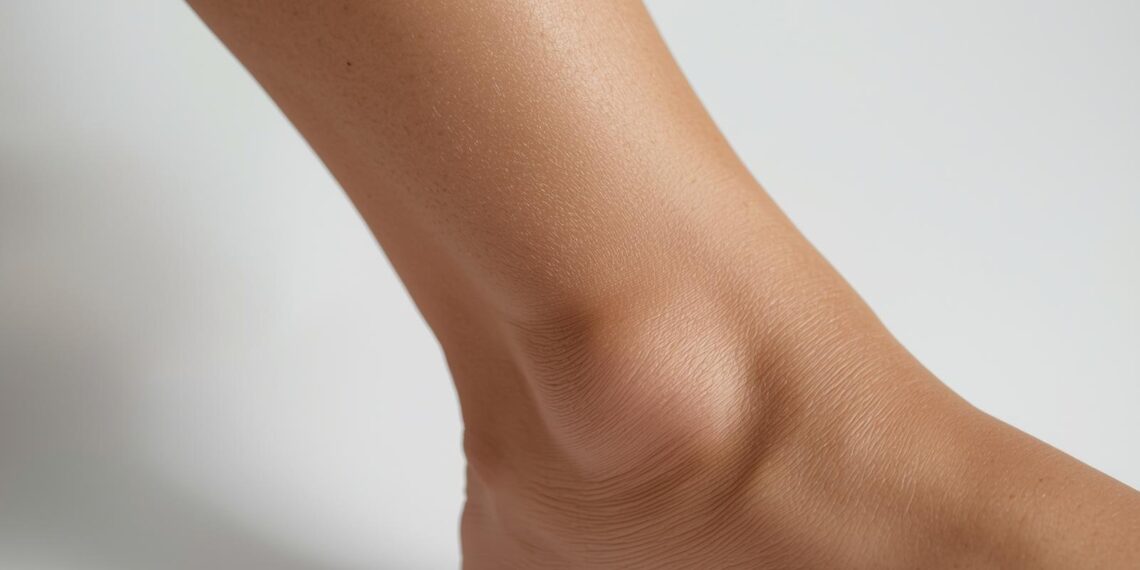Understanding Cankles: Causes and Solutions
# Understanding Cankles: Causes and Solutions
Cankles—a term that combines “calves” and “ankles”—describe the appearance of legs when the calf seems to merge with the ankle, with little or no distinct tapering. This can affect people’s confidence and comfort with their body image. In this article, we will delve into the causes of cankles, explore potential solutions, and offer tips for managing this common condition.
Cankles occur when there is minimal or no visible difference between the size of the calf and the ankle. Unlike typical legs, where the calf gradually narrows into the ankle, cankles lack this tapering effect. This condition can be due to various factors, including genetics, lifestyle, and health issues.
Cankles Definition
The term “cankles” is not a medical diagnosis but rather a colloquial expression used to describe this particular leg shape. It’s important to understand that cankles are not inherently a sign of poor health but can sometimes indicate underlying health concerns.
Causes of Cankles
Understanding the causes of cankles can help in finding appropriate solutions. Here are some common causes:
Genetics
Genetics play a significant role in determining body shape and structure, including the distribution of fat and muscle. If cankles run in your family, it’s likely that genetics are a contributing factor.
Weight and Fat Distribution
Excess weight can lead to fat accumulation in the lower legs, contributing to the appearance of cankles. In some individuals, fat distribution is naturally more concentrated around the ankles and calves.
Fluid Retention
Fluid retention, often caused by prolonged standing, hormonal changes, or certain medical conditions, can lead to swelling around the ankles. This swelling can make the ankles look larger and less defined.
Muscle Structure
The shape of the calf muscles can affect how the leg appears. Some people have naturally bulkier calf muscles that don’t taper as distinctly into the ankle.
Health Conditions
Certain health conditions, such as lymphedema, can cause persistent swelling in the legs, leading to the appearance of cankles. It is advisable to consult a healthcare professional if you suspect an underlying medical issue.
Solutions and Management
While cankles can be frustrating, there are various strategies to manage and potentially reduce their appearance.
Exercise and Weight Management
Engaging in regular exercise can help manage weight and improve muscle tone. Cardiovascular activities such as walking, running, or cycling can be effective. Targeted exercises like calf raises and ankle circles can enhance definition in the lower legs.
Dietary Adjustments
A balanced diet that reduces sodium intake can help minimize fluid retention. Eating foods rich in potassium, such as bananas and avocados, can also help balance fluid levels in the body.
Compression Garments
by Markus Spiske (https://unsplash.com/@markusspiske)
Wearing compression socks or stockings can improve circulation and reduce swelling. These garments apply gentle pressure to the legs, helping to prevent fluid buildup around the ankles.
Hydration
Staying well-hydrated can reduce the risk of fluid retention. Drinking plenty of water helps flush out excess sodium and supports overall circulation.
Medical Consultation
If cankles are accompanied by pain, redness, or persistent swelling, it is crucial to seek medical advice. A healthcare provider can determine if there is an underlying condition that requires treatment.
Cosmetic Procedures
For those seeking more permanent solutions, cosmetic procedures are available. However, these should be considered carefully and discussed with a qualified professional.
Liposuction
Liposuction can target excess fat deposits in the calf and ankle area, creating a more defined leg shape. This procedure is typically recommended for those with excess fat rather than fluid retention.
CoolSculpting
CoolSculpting is a non-invasive procedure that uses cooling technology to eliminate fat cells. It can be an option for reducing cankles, though results may vary.
Embracing Body Positivity
While managing the appearance of cankles, it’s also essential to embrace body positivity. Everyone’s body is unique, and focusing on overall health and well-being is more important than fitting a specific aesthetic ideal.
Building Confidence
Remember that confidence comes from within. Wearing clothes that make you feel comfortable and confident can help shift focus away from perceived imperfections.
Support Networks
Connecting with others who share similar experiences can be empowering. Online forums and support groups can offer encouragement and practical advice for managing cankles.
Conclusion
Cankles, while a common concern, can be managed through various lifestyle changes, medical consultations, and possibly cosmetic procedures. Understanding the causes and exploring solutions can help in making informed decisions about how to address this condition. Ultimately, embracing one’s body and focusing on health and happiness is key to living confidently and comfortably.







